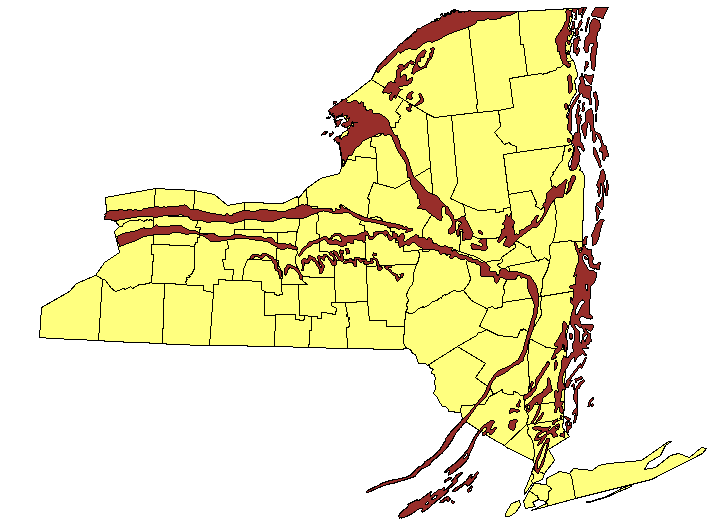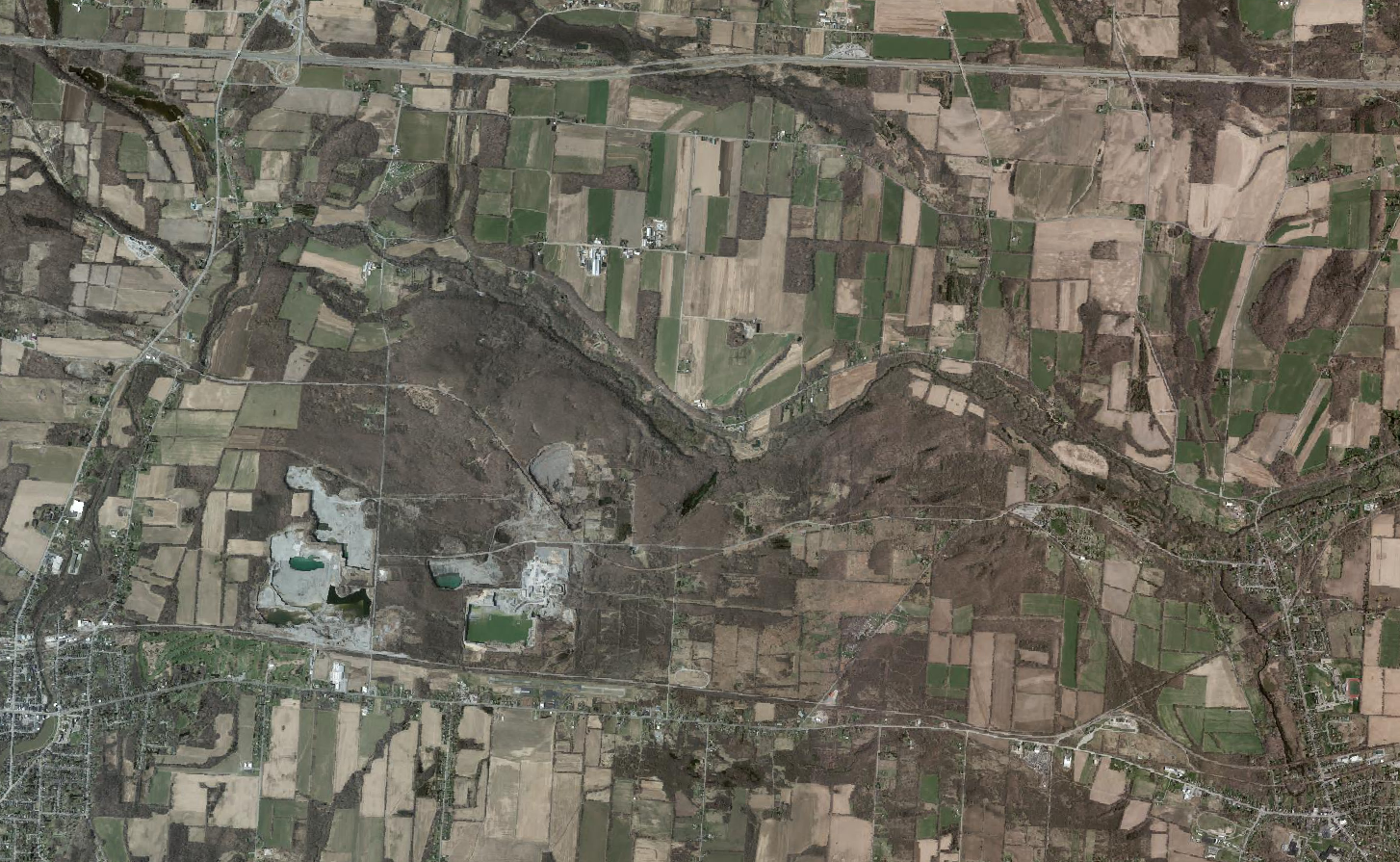Karst area
PDF report: pesticides-karst-2017
Karst as a specially vulnerable groundwater type

Carbonate rock outcrops in NY
Groundwater in karst carbonate terrain has a well-known high sensitivity to pollution, due to sinkholes and solution-widened fractures where surface water and its pollutants can rapidly reach the water table and wells. Groundwater and surface water in a karst area of northeastern Genesee County, NY were monitored for pesticides in 2010-2012, to accumulate field data to help determine if karst settings deserve special attention in New York’s pesticide registration.
Besides short retention times between surface and wells, the area is at particular risk from agricultural herbicides because it receives significant amounts of agricultural stream runoff that recharges the aquifer seasonally. Three settings were monitored: an array of superfund monitor wells related to a 1970 solvent spill, together with nearby losing stream reaches that carry agricultural runoff from the south; sinkholes entering the carbonate rock, following a snowmelt event that occurred after local fields had been treated early with herbicides; and private drinking water wells drilled into the carbonate rock. All three sets of samples were analyzed for atrazine and selected other herbicides, anions, and cations. The set of samples from drinking water wells, one sample from the sinkhole set, and three samples representing springs and streams were also tested for a broader array of pesticides.
Results
Groundwater in the 40-50 meters of carbonate rock at the superfund area had very similar seasonal nitrate and herbicide concentrations to the recharging stream reaches. Shale beneath the carbonate had much lower concentrations: no detectable residues of analyzed pesticides and less than half as much nitrate. Residues in the streams and carbonate peaked in June as high as 5 µg/L, after the common atrazine application season, and were all below detection limits by December.
Three of the ten sinkholes sampled had traces of atrazine, and a fourth had a concentration much higher than the 5.0 µg/L maximum of the ELISA method. The same sample tested at DEC’s lab had a concentration over 10x the 3 µg/L drinking water standard for atrazine, 16 µg/L metolachlor, and quantified metabolites of alachlor, metolachlor, and atrazine.
Just one of the drinking water wells in the carbonate had notable herbicide concentrations, up to 3 µg/L metolachlor. A few contained traces of herbicide metabolites. Overall, this sampling did not yield evidence of much exposure to pesticides via private drinking water from this type of rock. This is consistent with other upstate results outside the karst setting — unlike on Long Island, pesticides rarely reach upstate private drinking water wells at concentrations anywhere near standards, in any aquifer type.
However, the bill of health is not entirely clean. It is clear from the superfund well sampling and non-pesticide incidents in Genesee County that contaminants in surface water do enter this karst ground water system quickly and that the ground water in this aquifer type is more like surface water in the seasonality of herbicide concentrations, which is related to seasonality of herbicide use and seasonality of hydrogeology which are at their “worst” together in the spring. The spring 2012 sinkhole sampling, the Oatka Creek concentration of atrazine above the drinking water standard in June 2010, and earlier USGS surface water sampling demonstrate that surface water can contain transient pesticide concentrations of concern.
This round of sampling was followed by work in CSLAP Lakes.

Aerial view of karst region in Genesee County
Last updated 2023-09-21 sp17 AT Cornell.edu.